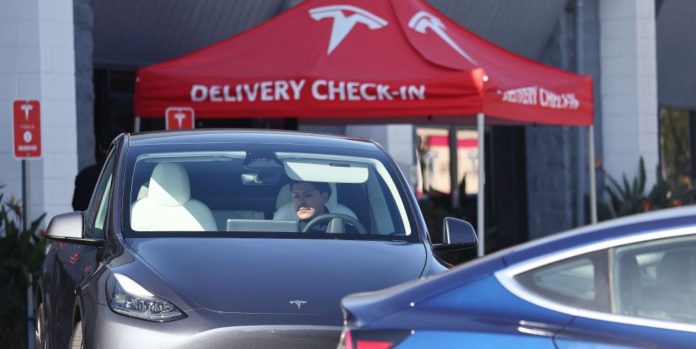From the March/April 2024 issue of Car and Driver.
It seems like every day we read a news report about the failing EV movement: plummeting sales, excess inventory, production cuts, factory investments canceled or delayed, elected officials railing against government support of EVs, disappointed dealers crying “Told you so.”
There’ve been plenty of speed bumps, but the story is more nuanced. Consider that global EV sales hit record numbers in 2023, accelerating to all-time highs in many markets, including the U.S., where sales grew by nearly 50 percent year over year to 1.1 million. Elsewhere, the Chinese automaker BYD alone sold nearly 1.6 million EVs.
Granted, there’s still a long way to go. It’s true that, in certain cases, demand is weaker than hoped. Sales of the Ford F-150 Lightning jack-rabbited out of the box in 2022 but have not met projections since, and the company recently announced plans to cut production from 3200 trucks a week to less than half that. Still, the fact that 24,165 Lightnings sold in 2023 would’ve brought gasps of amazement 10 years ago.
2017 The first model year for the sub-$40,000 Chevy Bolt and Tesla Model 3.
2020 GM and Tesla EVs become ineligible for the federal government’s $7500 tax credit, as each company’s sales exceed the volume cap.
2021 and 2022 Several new battery-electric models enter the market, many of which qualify for the full tax credit.
2023 The IRS’s updated EV tax-credit rules, which no longer use overall sales as an eligibility metric, come into effect.
When contextualizing today’s gloom, remember that many manufacturers made bold EV promises when faced with government-mandated zero-emission standards. Within the past few years, General Motors announced a goal of selling only zero-emission light-duty vehicles by 2035. Nissan promised that EVs will account for more than half of its sales by 2030. Jaguar said it would be all electric by 2025, while Ford announced plans to sell more than 2 million EVs in 2026. Yet, through the trade association the Alliance for Automotive Innovation, nearly all automakers oppose EPA proposals aimed at 67 percent of new-vehicle sales being electric by 2032.
In many cases, the manufacturers have only themselves to blame for missed sales targets. Who told Ford the sweet spot of the EV market is pickups with prices that can almost approach six figures? Why did GM chase EV sales with its nearly 10,000-pound GMC Hummer EV Pickup? GM missed sales targets by a country mile, delivering fewer than 76,000 EVs in 2023, less than one-fifth of which use the company’s new Ultium platform. The rest were Bolt EVs and EUVs, small affordable models canceled last year, though a replacement is due in 2025. Is anyone surprised that many early EV adopters are also small-car adherents?
Sam Abuelsamid, principal research analyst at Guidehouse Insights, suggests that many manufacturers simply guessed wrong with their EV offerings. “The last thing you want when you’ve spent several billion on battery plants and assembly plants is to have them sitting idle and not generating any revenue,” Abuelsamid says. Automakers “scrambled to build all of these factories because they wanted to sell the vehicles. The problem is, they had too many of the wrong products at the wrong price points.”
Another factor behind grand EV pronouncements is the jealousy over Tesla’s market cap (particularly when top executives’ compensation is tied to share price). Tesla’s high valuation must mean EVs are the path to riches, right? And if EV promises appeal to Wall Street, environmentalist wings of government, and the public, so much the better. But it’s easier to say you’re going all in on EVs than it is to design, build, and market battery- powered vehicles people want to buy.
Jamie Kitman is a lawyer, long-time rock band manager, ret’d (They Might Be Giants, Violent Femmes, Meat Puppets, OK Go, The La’s, Pere Ubu, among his clients), and veteran automotive journalist whose work has appeared in publications including Automobile Magazine, Road & Track, Autoweek, Jalopnik, the New York Times, the Washington Post, Politico, The Nation, Harper’s, and Vanity Fair as well as England’s Car, Top Gear, Guardian, Private Eye, and The Road Rat. Winner of a National Magazine Award for his column in Automobile Magazine and the IRE Medal for Investigative Magazine Journalism for his reporting on the history of leaded gasoline, in his copious spare time he runs a picture-car company, Octane Film Cars, which has supplied cars to TV shows including The Marvelous Mrs. Maisel, The Americans, Halston, and The Deuce and movies including Respect, The Post, and The Irishman. A judge on the concours circuit, he has his own collection with a “friend of the friendless” theme that includes less-than-concours examples of the Mk 1 Lotus-Ford Cortina, Hillman Imp, and Lancia Fulvia, as well as more Peugeots than he is willing to publicly disclose.

